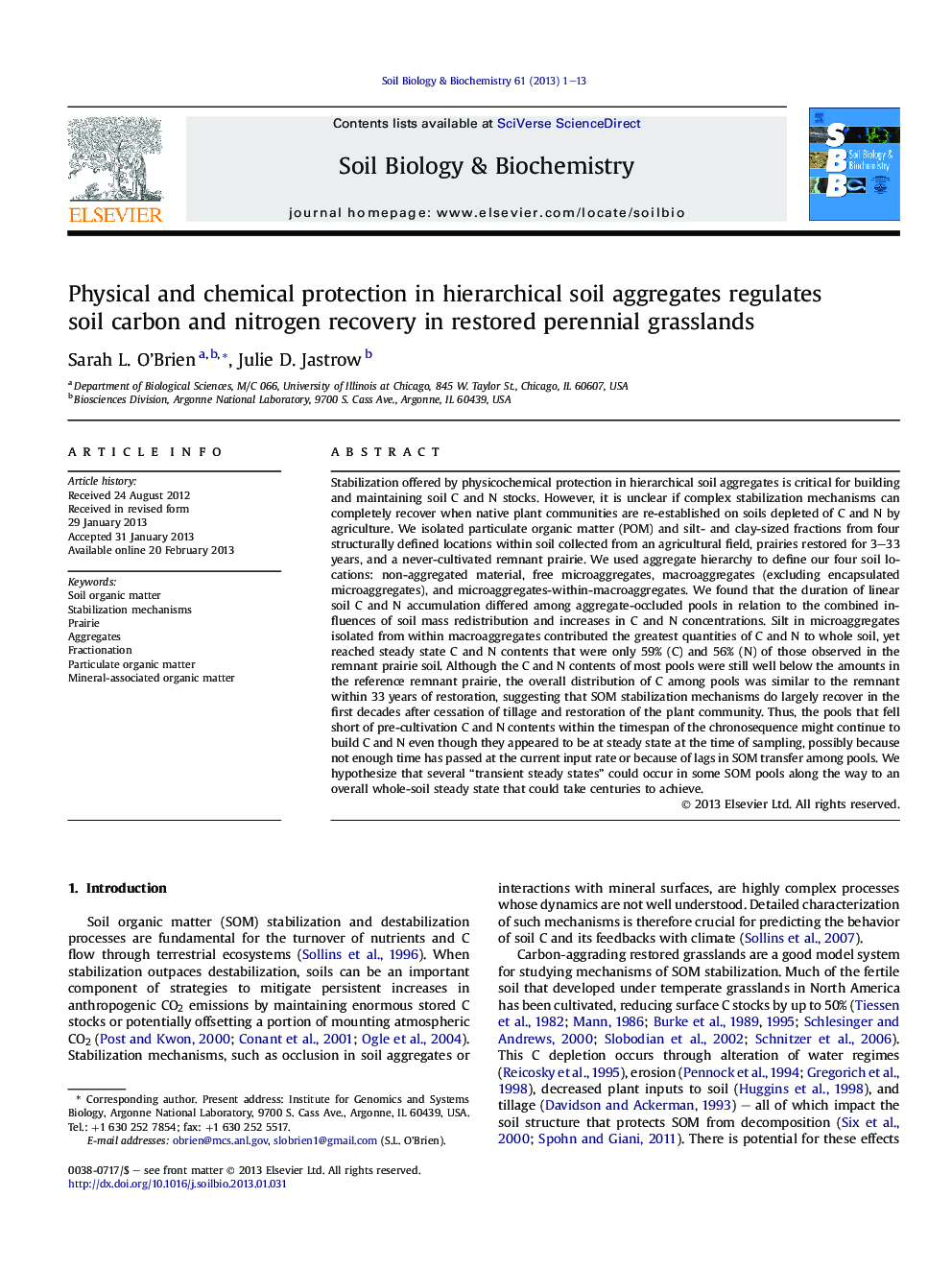| Article ID | Journal | Published Year | Pages | File Type |
|---|---|---|---|---|
| 2024784 | Soil Biology and Biochemistry | 2013 | 13 Pages |
Stabilization offered by physicochemical protection in hierarchical soil aggregates is critical for building and maintaining soil C and N stocks. However, it is unclear if complex stabilization mechanisms can completely recover when native plant communities are re-established on soils depleted of C and N by agriculture. We isolated particulate organic matter (POM) and silt- and clay-sized fractions from four structurally defined locations within soil collected from an agricultural field, prairies restored for 3–33 years, and a never-cultivated remnant prairie. We used aggregate hierarchy to define our four soil locations: non-aggregated material, free microaggregates, macroaggregates (excluding encapsulated microaggregates), and microaggregates-within-macroaggregates. We found that the duration of linear soil C and N accumulation differed among aggregate-occluded pools in relation to the combined influences of soil mass redistribution and increases in C and N concentrations. Silt in microaggregates isolated from within macroaggregates contributed the greatest quantities of C and N to whole soil, yet reached steady state C and N contents that were only 59% (C) and 56% (N) of those observed in the remnant prairie soil. Although the C and N contents of most pools were still well below the amounts in the reference remnant prairie, the overall distribution of C among pools was similar to the remnant within 33 years of restoration, suggesting that SOM stabilization mechanisms do largely recover in the first decades after cessation of tillage and restoration of the plant community. Thus, the pools that fell short of pre-cultivation C and N contents within the timespan of the chronosequence might continue to build C and N even though they appeared to be at steady state at the time of sampling, possibly because not enough time has passed at the current input rate or because of lags in SOM transfer among pools. We hypothesize that several “transient steady states” could occur in some SOM pools along the way to an overall whole-soil steady state that could take centuries to achieve.
► Some but not all aggregate-occluded pools reached steady-state C and N in 33 y. ► After 33 y, only some steady-state pools reached apparent C and N storage limits. ► Overall distributions of soil C and N recovered within the 33-y observation period. ► Several intermediate steady states might precede an overall ecosystem steady state. ► Complexity in protection and transfer of SOM among pools may constrain SOM accrual.
